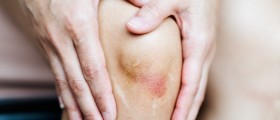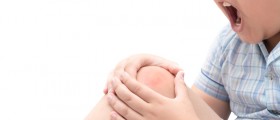
Defining Juvenile Idiopathic Arthritis
Juvenile idiopathic arthritis (JIA) is a subtype of arthritis seen in adults. The meaning of the term is relatively complex, juvenile meaning that it first appears before the individual reaching 16 years of age. The idiopathic in any kind of medical context means that the cause of the problem is unknown, while arthritis is the inflammation of the joints. There has been an ongoing debate whether the condition should have the term ‘idiopathic’ or ‘rheumatoid’ in its title and the two are often used interchangeably.
Signs and Symptoms
The early symptoms of juvenile idiopathic arthritis are usually comorbid with many different medical disorders and they are only subsequently related to JIA. For instance, a child may lose an appetite as well as interest in physical activities. Such behavior may be followed by illness that manifests itself through symptoms resembling those of the flu. Only when a child starts to limp as the joints of the knees, wrists, or ankles start to swell up is the JIA showing its transparent symptoms.
Furthermore, another symptom that is in most cases only detected by an experienced professional is the inflammation in the front of the eye, as it may not produce any signs of its presence. This type of problem is more prevalent in girls than in boys. Finally, children suffering from JIA are often affected by growth problems in such a way that they will grow much slower than their healthy counterparts. Not surprisingly, the types of symptoms, their frequency, as well as severity vary from person to person. It should be noted that JIA is a chronic condition which has to be taken care of as fast as possible for if left neglected it can lead to eye problems such as cataracts, glaucoma and blindness. Other severe problems include physical retardation of extremities.
Causes
As JIA is an autoimmune illness, the body attacks itself and destroys its cells, tissue, joints and bones. The reason for the onset of the autoimmune process is unknown, so it is believed that being genetically predisposed coupled with an external trigger induces JIA. Elements that seem to be common among individuals suffering from this disorder include being Caucasian, being female and having been in contact with certain viruses that are known to provoke JIA. Further, many experts agree that stress plays a significant role in the onset of JIA and possibly so do female sex hormones.
Classification and Diagnosis
There are three distinct types of juvenile idiopathic arthritis and those are the systemic, the oligoarticular and the polyarticular JIA. The systemic JIA can be difficult to diagnose as its symptoms include periods of high body temperatures and pinkish rashes. The temperature can appear once daily or a couple of time during one day, whereas the rash disappears about every hour and surfaces somewhere else. The systemic JIA is just as likely to affect boys as it is girls and it spreads on both small and the large joints. The oligoarticular JIA is responsible for about half the cases of juvenile idiopathic arthritis and it usually attacks the larger joints in the body. The oligoarticular JIA leads to asymmetric growth and is difficult to observe so regular checkups are mandatory in order to detect it as early as possible. Lastly, the polyarticular JIA affects more joints in the first 6 months than the oligoarticular JIA and it often involves the smaller joints such as the neck, jaw, and fingers. In the case of the polyarticular JIA, if one wrist is affected chances are the other one will be as well, or in other words it attacks the joints in pairs. When it comes to diagnosing the JIA, the process can be particularly challenging as the pain, fever and loss of interest in physical activities, among other symptoms, can be the signs of numerous problems, while at the same time there is no diagnostic test for JIA. Medical health professionals use a combination of visual examination, blood tests, and x – rays. The blood test is performed to show the antibodies as well as the rheumatoid factor, which is not always present in children. The scanning is done to rule out any other possible causes of pain and swelling.
Treatment
As the JIA is a chronic condition, the treatment is a complicated, ongoing process. It involves a wide spectrum of professionals, from pediatricians, physiotherapists, occupational therapists, rheumatologists, dentists and school nurses, to name some. A major component of treatment is the physical therapy, while keeping the pain under control is also an important aspect. When it comes to medications, anti-inflammatory drugs are used to depress the effects of JIA, while at the same time omega-3 fatty acids are known to have beneficial effects. In addition, occupational therapy is often recommended as the child will learn and have a change to practice many useful skills. Being actively engaged in physical activities is another crucial aspect of treatment, while surgery is only used as the last resort.

















Your thoughts on this
Loading...